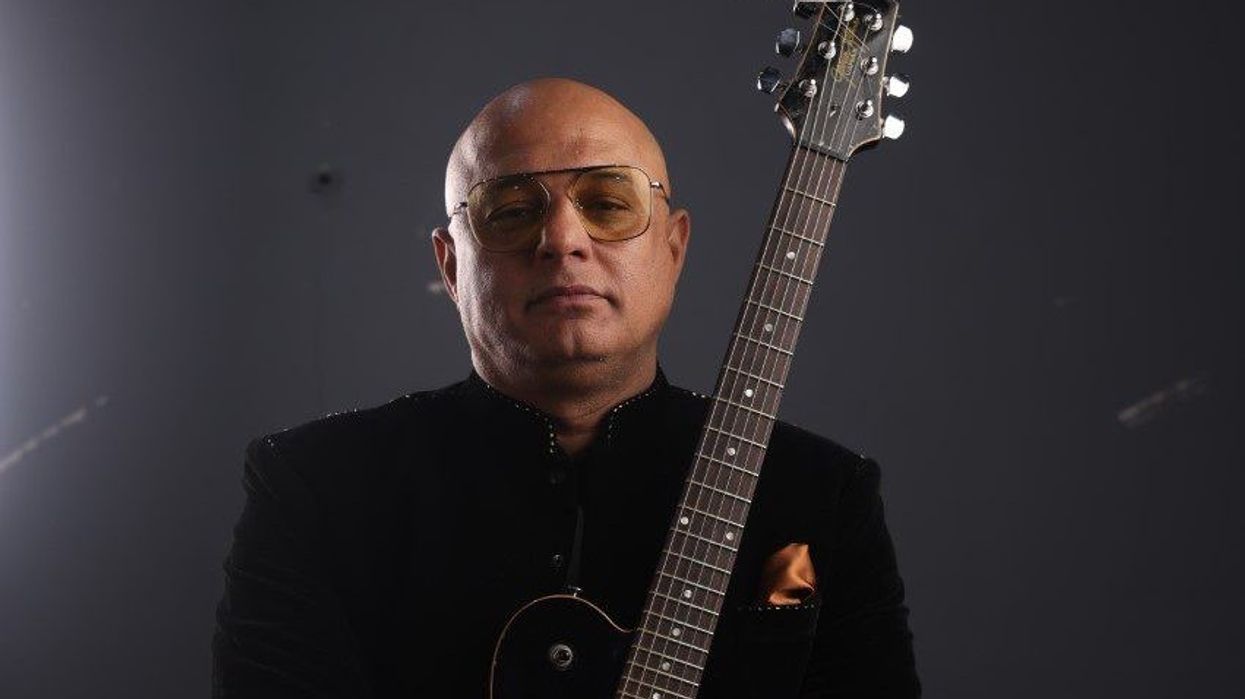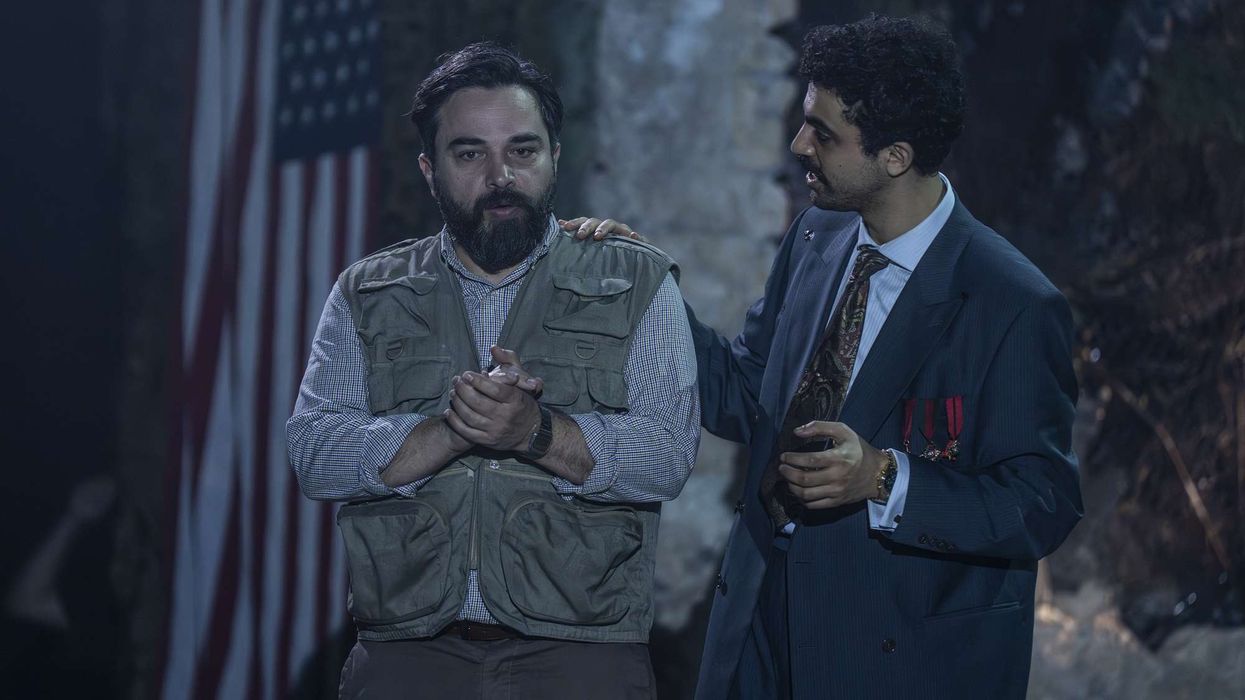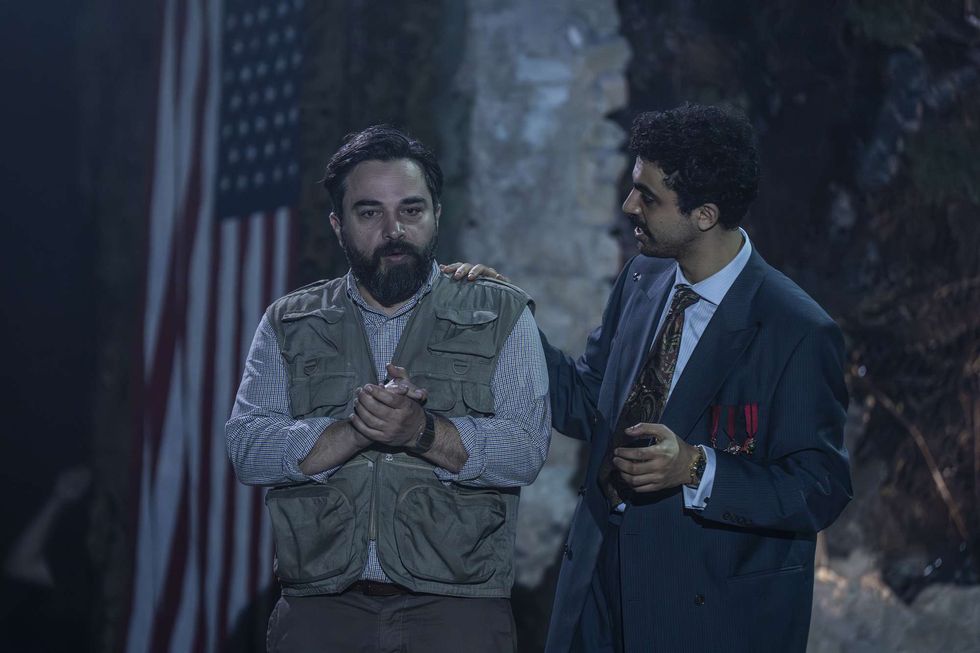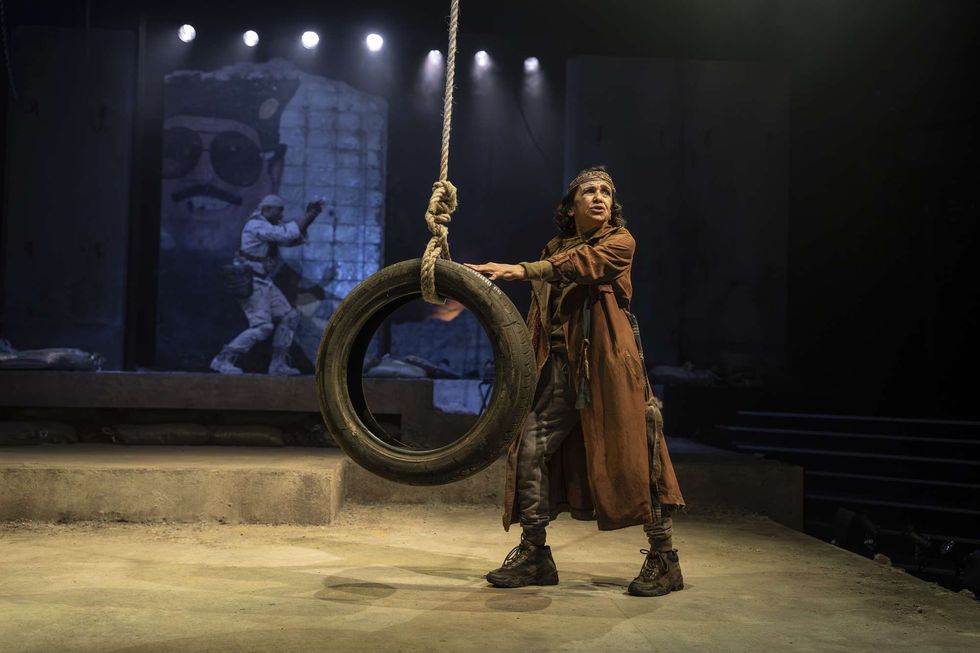From global fans to artists following in his giant footsteps, Ali Azmat became the voice for an entire generation as the lead singer of legendary band Junoon.
The Pakistani icon helped shape popular music in the 1990s and lay the foundation for a thriving pop industry in South Asia. The trailblazer’s amazing journey went from delivering explosive hits like Yar Bina, Sayonee, Dosti and Jazba-e-Junoon with Junoon to shaping a successful solo career.
Three decades later, the Sufi rock pioneer is still going strong and returns to the UK for a big solo concert at Indigo at O2 in London on May 14, with a full live band. He is set to deliver his all-time classics, with brand new material at what promises to be a high-energy show powered by his unmistakable vocals.
Eastern Eye caught up with the powerfully voiced pop icon to speak about his path-breaking journey, UK concert, being a musical rebel and the experience of acting in record-breaking movie The Legend Of Maula Jatt.
How do you look back on your journey in music?
I look back at my journey with a sense of pride and experience that cannot be replaced. Although it has been fulfilling and a lot of fun, looking back is not something I tend to do. I am all about looking forward to the next challenge. But overall, it’s been a great journey and I hope it continues, as I’m getting ready for another phase of my musician life.
I think when we won the Channel V award. I remember we were accompanied by Sting and Def Leppard. You know, these are childhood heroes of mine, and I couldn’t believe that we were on the same stage as them. So, that was obviously a remarkable memory.
Would you have done anything differently on this long musical journey?
Of course, I mean every musician has thoughts about having done things differently, especially when listening back to the songs. I mean, most of the music we listen to, thinking you know, we could have recorded this a certain way or, sung that better. So yeah, things could have been different, if we were different!
What does music mean to you today?
The connection with music remains strong. It means exploring and expressing oneself through an instrument, whether that is your voice, a guitar, violin, saxophone or whatever. You know, everyone has to find their own voice and sound, and then they have to express what can’t be expressed through words or actions. Music always does that.
Which song do you most enjoy performing live?
I am connected to all my songs. But I have always enjoyed performing Dosti until this day because it’s a simple, but meaningful song that remains relevant. Since we started, older songs like Dosti, we still change them around every time we play, which makes it kind of fun. You take that old music, you may obviously be sick of and play differently every time. So, you keep yourself entertained and offer audiences something new.
How much does live performance mean to you today?
Live performances mean everything to me, and most artists would say the same. (Laughs) I love it because it is the only thing, I think, I do well and really enjoy making that connection with audiences, which is hard to describe in words. I am looking to do that again with the UK show in London.
How much are you looking forward to your UK show?
I have always had a special connection with the UK and music fans there. I’m really looking forward to this UK performance because I haven’t played there since the 2019 gig at Wembley Arena. We are looking forward to showcasing classics people love and our set list of new music, which will all be presented in a way not done before. Really excited for this show.
How does a solo performance compare to being onstage with Junoon?
Comparing being on stage with Junoon and my own solo performances, is like comparing oranges with bananas. In terms of Junoon, we don’t meet as much as we would like to, and it can be the same old music. But as a solo performer, I get to play original music with my other band, but also classics from Junoon. We have been rehearsing and working very hard to change around the music, to just keep it fresh, and give audiences a new experience with a bigger set list. So yeah, I enjoy my solo performances more.
Do you think you are still a musical rebel?
(Smiles) I now like to call myself a musical diplomat. Musical rebel? Yes, I’m still a bit of that, but where do we all stand now in this ever-changing musical world. It is hard to pinpoint that. Today, a lot of kids who listen to music almost have like a 30-second attention span. So, I don’t know if me being a musical rebel means anything. But do I like to do things my own way, yes.

What would you say is the master plan going forward?
God has a master plan! I don’t have one. (Laughs) I just float through every day, as everyone around me will say - that you don’t do much. That you just sit, procrastinate, and don’t have a master plan. Ultimately, I think I am working on somebody else’s master plan.
You acted in the record-breaking super hit film The Legend Of Maula Jatt.
What was the experience of working on such a path-breaking movie for Pakistani cinema?
The Legend Of Maula Jatt was a great, great experience. First of all because they’re all friends of mine. I enjoy being around my friends. And while you’re hanging out, you make a movie also. But I had almost forgotten about it because I shot that movie in 2017 and it was released in 2022, about four or five years later.
Will you be acting in more projects?
I will do more acting projects because I enjoy working with friends. But you know, I’m generally a very lazy person. So, for me to go on set for let’s say, two months, it would have to be a special project. I did a couple of other movies, and it was a challenge giving those 45 days. I shot one movie, but it never came out. Although I do have some kind of draw towards acting, I’m not really an actor. But if people think I can do something in that field, it’s nice. It’s really
about exploring a part of yourself, which I’m open to.
Why do you think we should all come to your concert?
You should all come to my concert because it’s gonna be a ride. We’re gonna take some musical liberties, we’re going to explore some new styles, and there will be lots of rock and roll. Lots of, you know, great musicianship from the whole band. I mean, you have to check out this band that I play with – they are the masters of the game. You will certainly enjoy and groove.
Ali Azmat is in concert at Indigo at The O2, 205 Peninsula Square, London SE10 0ES next Sunday (14). www.theo2.co.uk and www.rockonmusicuk.com







 Ammar Haj Ahmad, Sayyid Aki ©EllieKurttz
Ammar Haj Ahmad, Sayyid Aki ©EllieKurttz  Kathryn Hunter, Arinzé Kene©EllieKurttz
Kathryn Hunter, Arinzé Kene©EllieKurttz





